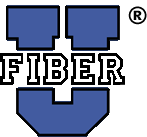
Topic: Fiber Optics |
Table of Contents: The FOA Reference Guide To Fiber Optics |
| FOA
Reference Guide To Fiber Optics And Study Guide To FOA CFOT Certification  Introduction The purpose of this website is to provide a reference guide to those involved with fiber optics components and/or networks, either in design, manufacture, installation, use, maintenance or troubleshooting, or those teaching the personnel who will work with it. This website along with its companion book is also the reference guide for FOA Outside Plant Certification, CFOT. With a subject so broad, it’s impossible to cover every aspect of the topic in depth. What will be covered is the basics of fiber optics for communications systems. The Fiber Optic Association, Inc., the nonprofit professional association of fiber optics, has become one of the principal sources of technical information, training curriculum and certifications for the cabling industry. As technology has driven the rate of technical change ever faster, it has become a challenge to provide printed reference books that are not hopelessly out of date. Instead, many readers turn to the Internet for more up-to-date technical information. The information on the Internet, however, is often biased toward commercial interests or application points of view, even that on supposedly non-commercial websites, and anonymous sources must be assumed to be untrustworthy or have a commercial agenda. The FOA is focused on education of technicians, not selling products, and we think it’s important that every tech knows as much as possible about fiber optic technology without bias so they can deal successfully with design and installation in all types of applications. The FOA created its Online Reference Guide to provide a more up-to-date and unbiased reference for those seeking information on cabling and fiber optic technology, components, applications and installation. It’s success confirms the assumption that many users prefer the Internet for technical information. With the companion printed book, we address the needs for those who prefer printed books or who must have them to meet academic requirements. For those who want this printed version but also want access to the web for color graphics, self-study programs with automatic self-testing or links to even more technical information, we have this FOA Online Reference Guide website to find additional information on the sections covered in this book.  Now we've added "Fiber U" as an online training site for teaching cabling. It includes online self-study courses to help everyone learn about cabling and fiber optics. If you have feedback on the website or book, feel free to email comments or questions to the FOA at <info @ thefoa.org>. Website Contents Each page will open in a new window to keep this index open. See the "Fiber Optic Technology and Standards" Section below for information on networks, WDM, etc. FOA videos about cable preparation, termination, splicing and testing on Check your comprehension: take the section quizzes! Links are at the bottom of each page. FOA Reference Books 


Table of Contents: The FOA Reference Guide To Fiber Optics |
|
|